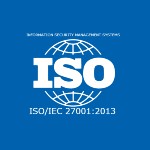How PE firms use competitive intelligence to de-risk investment decisions
Posted by | Fuld & Company
Private equity firms operate under pressure to move quickly, price aggressively, and deliver returns in compressed timelines. But speed doesn’t negate the need for certainty. For leading firms, competitive intelligence (CI) has become a critical tool—not just for validating assumptions, but for revealing blind spots that can derail value post-close.
Whether during pre-deal diligence or ongoing portfolio support, CI for PE firms is helping investors sharpen their theses, test positioning, and make more confident decisions in increasingly complex markets.
Using CI to strengthen private equity due diligence
Traditional private equity due diligence focuses heavily on financials, contracts, and management. But these don’t always reveal the full picture—especially in fragmented or emerging sectors where competitive positioning, channel dynamics, or customer sentiment can shift rapidly.
Competitive intelligence complements this view by:
- Providing third-party validation of the target’s value proposition and differentiation
- Mapping how competitors are positioned, funded, and scaling—especially in markets where growth narratives are inflated
- Assessing switching risks and customer loyalty dynamics through primary research
- Identifying regulatory or reputational threats that could impact valuation or integration
When woven into the diligence process, CI offers a forward-looking, market-aware lens that enhances traditional risk assessments and helps investment teams price appropriately—not optimistically.
Tools and techniques tailored to investment decisions
PE firms increasingly rely on structured CI tools to support deal evaluation and post-investment planning. These go beyond industry reports and include:
- Primary source interviews with customers, competitors, former employees, or distributors
- Win/loss and voice of customer studies to assess market traction and brand strength
- War gaming and scenario modeling to evaluate how competitors might respond post-deal
- Benchmarking tools to compare operating models, pricing structures, and capabilities across peer sets
What sets leading firms apart is their ability to synthesize this intelligence into actionable insight: adjusting deal structures, integration priorities, or go-to-market plans based on real-world feedback, not management assumptions.
Post-close value creation: CI beyond the deal
The value of competitive intelligence doesn’t stop at the point of acquisition. Within portfolio companies, it plays a critical role in value creation—from informing market entry and product positioning to supporting bolt-on acquisitions and preparing for exit.
In one example, a private equity firm focused on enterprise SaaS engaged Fuld to assess two niche investment opportunities: workforce management software for part-time event staff, and POS and merchandise management solutions for venues and festivals. The objective was to evaluate market size, growth potential, and risk factors before committing capital.
Fuld’s research included:
- Revenue model validation, including hourly software usage and take-rate structures tied to F&B and merchandise sales
- Market sizing based on venue types, event frequency, staffing needs, and credit-based transactions
- Competitive intelligence assessing current providers, pricing dynamics, and barriers to entry
This intelligence helped the firm validate one target’s long-term growth trajectory and supported its acquisition strategy. The result: an annualized return exceeding 25%.
More broadly, CI for PE firms enables portfolio companies to:
- Identify early signs of competitive threats or new entrants
- Refine positioning and go-to-market strategies
- Benchmark performance and pricing against emerging players
- Inform M&A playbooks for tuck-ins or vertical expansion
When applied consistently, risk assessment for investments becomes an engine for post-close growth—not just downside protection.
Best practices for embedding CI in PE operations
To make CI an asset—not an ad hoc input—leading PE firms follow several best practices:
- Start early: Integrate CI into early diligence, not just confirmatory phases
- Focus on the “so what”: Ensure findings are linked to valuation, risk, and operational planning
- Institutionalize access: Make CI part of the investment team’s workflow, not a side report
- Keep it lean and targeted: CI for PE should be high-impact, fast-turnaround, and deal-relevant
- Tie insight to performance: Use it to inform value-creation plans, pricing moves, or competitive positioning post-close
When treated as a decision-making asset rather than a background check, CI consistently delivers outsize value throughout the investment lifecycle.
For PE firms navigating competitive deal environments and aggressive return timelines, intelligence is leverage. By embedding CI into private equity due diligence and portfolio management, firms gain sharper visibility into market dynamics, faster feedback on strategy, and a stronger handle on risk.
Tags: Competitive Strategy, Financial Services, Market Analysis, private equity



















